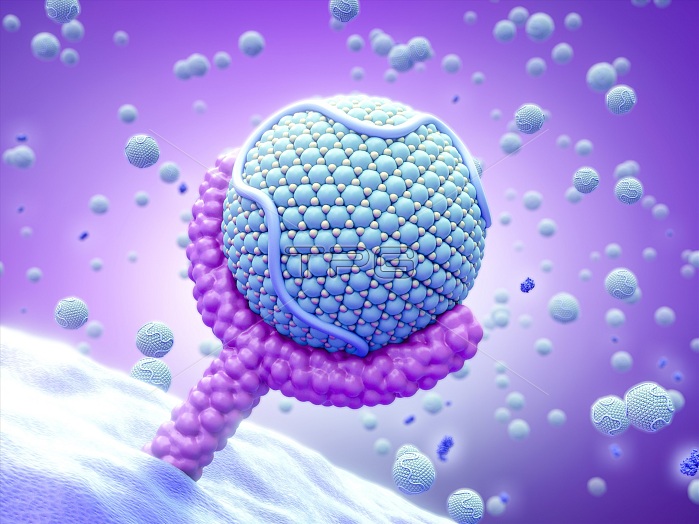
PCSK9 and lipoprotein bound to receptor. Computer illustration of a low-density lipoprotein (LDL), or 'bad' cholesterol, molecule (round) bound to an LDL receptor (LDLR) protein (Y-shaped) in a cell surface (bottom), with molecules of the enzyme proprotein convertase subtilisin/kexin type 9 (PCSK9, blue) in the background. When there are high levels of LDL cholesterol in the blood it builds up on the sides of blood vessels hardening them, a condition named atherosclerosis. This narrows the blood vessels and may block them. LDL receptors recognise and bind to LDL molecules to remove them from the bloodstream. When PCSK9 binds to an LDLR, the receptor is destroyed along with the LDL particle. But if PCSK9 does not bind, the receptor can return to the surface of the cell and remove more cholesterol. PCSK9 inhibitor drugs reduce the amount of cholesterol in the blood by improving the liver's ability to recycle LDLRs.
| px | px | dpi | = | cm | x | cm | = | MB |
Details
Creative#:
TOP15941089
Source:
達志影像
Authorization Type:
RM
Release Information:
須由TPG 完整授權
Model Release:
N/A
Property Release:
N/A
Right to Privacy:
No
Same folder images:

 Loading
Loading